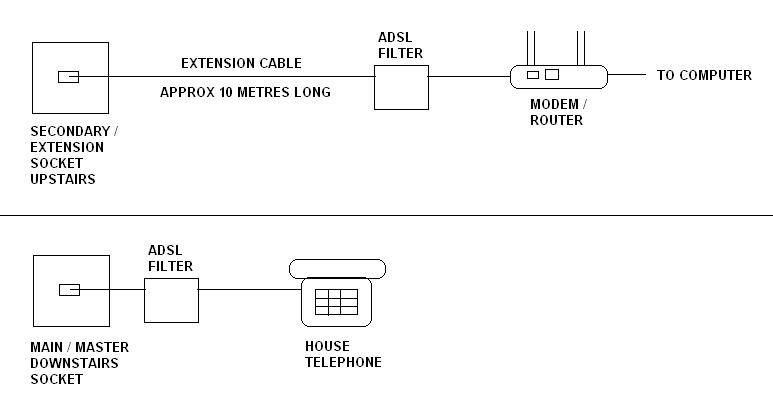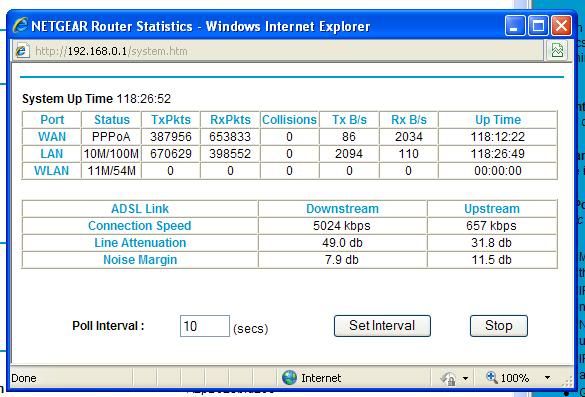Since having a browse of this forums section, Im rechecking the internet connection in my parents house and just wanted to check something.

The main telephone socket is downstairs in the hall, under the stairs in a cupboard. The only thing connected to this is a microfilter and a telephone.
Upstairs in one of the bedrooms at the front of the house is a secondary telephone socket. Unfortunately, the computer is in another room on the back of the house. For years now a telephone extension cable has been run through various rooms and walls to where the computer is.
On the end of the cable is a microfilter (the end where the computer is, not at the wall socket end). The microfilter then connects into the router and then into the computer.
Which end should the microfilter be on? Before the extension cable at the wall socket end? Or at the end of the extension cable before the router? Or does it not matter?
The house is quite old, its a pre 1980's house so I dont have a clue what state the electrical wiring is like as I was considering the Homeplugs, if the modem/router was connected upstairs to the secondary socket and I used Homeplugs upstairs, do you think I may get a better connection as I can imagine the very long telephone extension cable currently in place has a negative impact on connection speed/quality.
Any advice, thanks in advance.

The main telephone socket is downstairs in the hall, under the stairs in a cupboard. The only thing connected to this is a microfilter and a telephone.
Upstairs in one of the bedrooms at the front of the house is a secondary telephone socket. Unfortunately, the computer is in another room on the back of the house. For years now a telephone extension cable has been run through various rooms and walls to where the computer is.
On the end of the cable is a microfilter (the end where the computer is, not at the wall socket end). The microfilter then connects into the router and then into the computer.
Which end should the microfilter be on? Before the extension cable at the wall socket end? Or at the end of the extension cable before the router? Or does it not matter?
The house is quite old, its a pre 1980's house so I dont have a clue what state the electrical wiring is like as I was considering the Homeplugs, if the modem/router was connected upstairs to the secondary socket and I used Homeplugs upstairs, do you think I may get a better connection as I can imagine the very long telephone extension cable currently in place has a negative impact on connection speed/quality.
Any advice, thanks in advance.
Last edited:



